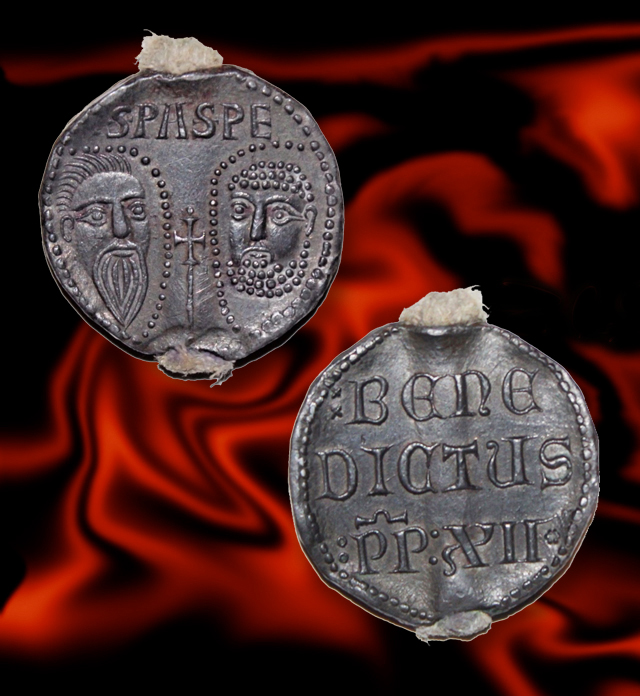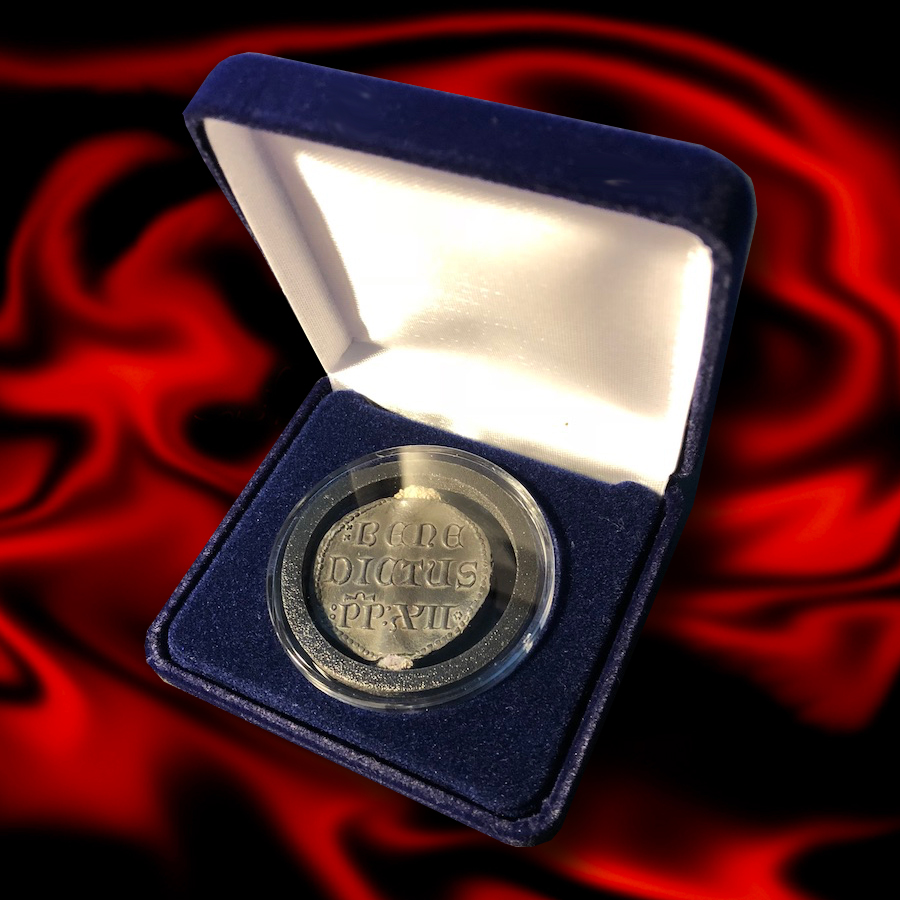Pope Benedict XII
Pope Benedict XII
Pope Benedict XII Papal Bulla
Pope Benedictus XII (born Jacques Fournier in France; 1285-1342) was pope from 30 December 1334 to his death in April 1342. He was the third Avignon Pope, known for reforming monastic orders and his opposition to nepotism. Politically unable to establish his capital to Rome, he started the great palace at Avignon. One of Benedict’s most significant failures, however, was his inability to curb the conflict between England and France, which began during his pontificate and came to be known as the Hundred Years’ War (1337-1453). In blue velvet presentation case.
A papal bull is a specific kind of public decree or charter issued by a pope of the Roman Catholic Church. It is named after the leaden seal (bulla) that was traditionally appended to the end in order to authenticate it. On the obverse it depicted, originally somewhat crudely, the early Fathers of the Church of Rome, the Apostles Saint Peter and Saint Paul, identified by the letters Sanctus PAulus and Sanctus PEtrus (thus, SPA •SPE or SPASPE). St. Paul, on the left, was shown with flowing hair and a long pointed beard composed of curved lines, while St. Peter, on the right, was shown with curly hair and a shorter beard made of dome-shaped globetti (beads in relief). Each head was surrounded by a circle of globetti, and the rim of the seal was surrounded by an additional ring of such beads, while the heads themselves were separated by a depiction of a cross. On the reverse was the name of the issuing pope in the nominative Latin form, with the letters “PP”, for Pastor Pastorum (“Shepherd of Shepherds”). This disc was then attached to the document either by cords of hemp, in the case of letters of justice and executory letters, or by red and yellow silk, in the case of letters of grace, that was looped through slits in the vellum of the document. The term “bulla” derives from the Latin “bullire” (“”to boil””), and alludes to the fact that, whether of wax, lead, or gold, the material making the seal had to be melted to soften it for impression.


